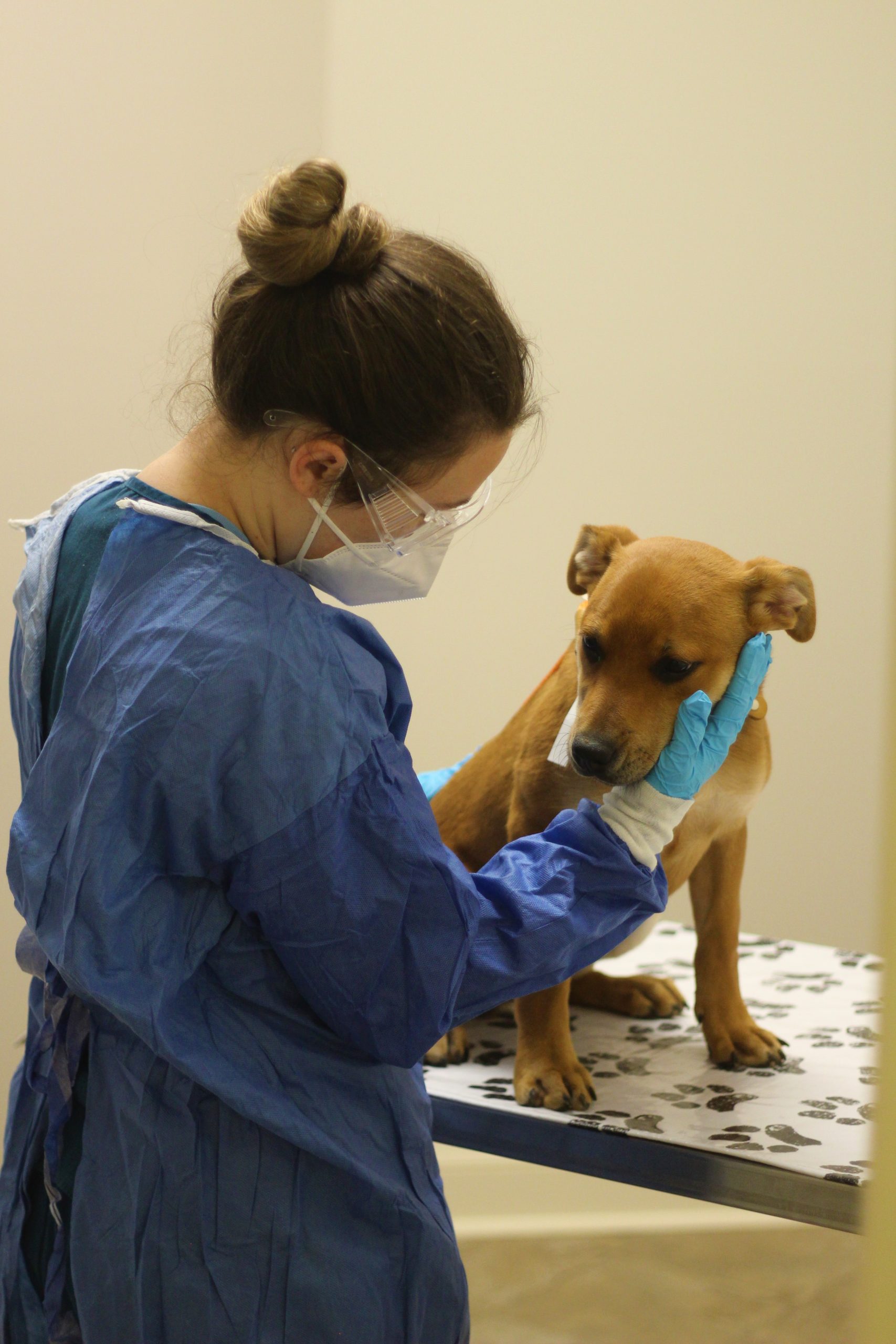News, ideas & inspiration from industry leaders

Mile-High Momentum: How Denver Is Tackling the Veterinary Shortage
This case study in collaboration and community serves as a model for other shelters
The veterinary shortage is hitting the animal welfare sector particularly hard. Veterinarians are leaving shelters for a number of reasons, including lack of support; physical, mental and emotional exhaustion; low pay, compared to salaries in private practice, and inflexible schedules. Factor in the high living costs in many cities, student debt and the physical demands of the job, and challenges continue to add up.
One community is finding a way through. Emily Berger, Employee Services Liaison with Denver Economic Development, and Melanie Sobel, Director of Denver Animal Protection, have taken meaningful action in collaboration with other local organizations. They shared their strategies at last November’s Annual Conference.
Acknowledging the situation
In 2022, Denver Animal Shelter approached the Denver Office of Economic Development and Opportunity to outline the challenges they face recruiting and retaining veterinary professionals. Through the discussion, they created a call to action for local nonprofit clinics, shelters, educational entities, apprenticeships, associations and individuals in veterinary medicine to collaborate and develop solutions.
Defining the problem
A total of 10 organizations came together to define the problem. They articulated it on a national scale:
Recent studies identified a shortage of veterinary professionals in the U.S. The studies found there are barely enough veterinarians right now to cover the current demand for pet medical care, which has surged due to the number of people who welcomed pets over the pandemic.
The current pace of veterinarian graduates will leave a 16% shortfall over the next 10 years. It would take more than 30 years of graduates to meet the 10-year need for credentialed veterinary technicians based on current U.S. education capacity.
Identifying key focus areas
Knowing the multitude of factors contributing to the issue–including compensation, burnout and lack of career mobility–the group focuses on two key areas:
- Short- and long-term solutions for recruitment of veterinary professionals
- Short- and long-term solutions for retention of veterinary professionals
The group separated into two teams, each focused on one of the areas. They defined another set of key issues bucketed into the recruitment and retention categories, developed possible solutions and voted on what to prioritize.
Taking action by inspiring K-12 students
K-12 schools received a lot of attention during their brainstorm for solutions.
“You know, there’s a natural affinity between children and animals,” said Sobel. “When you ask kids, ‘What do you want to be when you grow up?,’ many say, ‘A veterinarian.’”
When the groups spoke to K-12 students, they highlighted veterinary careers as well as other pathways for students who may not pursue veterinary school due to academic, financial, or personal constraints. These examples include animal care attendants who gain hands-on experience while pursuing biology degrees, potentially leading to veterinary careers.
“The kids were so excited. And, you know, we had them talk to our veterinarians. We brought in an animal control officer, so they could see that this is a way that they could help animals,” said Sobel.
Partnering with Colorado State University
The group is also piloting a program to support applicants not accepted into Colorado State University’s DVM program by connecting them with veterinary-related job opportunities across the state. Since thousands apply for only a few hundred spots, there’s an opportunity to hire these hopefuls for a year until they can reapply. Some applicants may already have vet assistant or vet tech experience, while others may not. The initiative also acknowledges that some may choose to stay in Registered Veterinary Technician roles instead of reapplying.
The Director of Admissions at CSU contacts non-accepted students in February or March, informing them of these opportunities. The effort is currently in its pilot phase and will soon be promoted for broader outreach.
Generation Z
The group is also piloting a program to support applicants not accepted into Colorado State University’s DVM program by connecting them with veterinary-related job opportunities across the state. Since thousands apply for only a few hundred spots, there’s an opportunity to hire these hopefuls for a year until they can reapply. Some applicants may already have vet assistant or vet tech experience, while others may not. The initiative also acknowledges that some may choose to stay in Registered Veterinary Technician roles instead of reapplying.
The Director of Admissions at CSU contacts non-accepted students in February or March, informing them of these opportunities. The effort is currently in its pilot phase and will soon be promoted for broader outreach.
Digging deeper to understand retention
The group looked closely at what motivates RVTs to leave shelters. They worked with the Colorado Association of Certified Veterinary Technicians and sent a survey to their membership with four questions:
- When you think of a veterinary job you want to stay in, what workplace factors are most likely to make you feel that way?
- When you think of a veterinary job you would want to leave, what workplace factors are most likely to make you feel that way?
- The decision to spend an entire career as a credentialed technician includes many factors. What workplace factors are most likely to influence your decision to stay in vet medicine?
- What workplace factors are most likely to influence your decision to leave the profession of vet medicine?
More than 500 members responded, and findings revealed that five key factors contribute to long-term job satisfaction in veterinary roles.
- Compensation & benefits – Competitive pay and strong benefits packages
- Positive work environment – Supportive and collaborative team culture
- Effective leadership – Communicative, supportive management
- Work/life balance – Manageable workloads and flex scheduling
- Quality of patient care – The ability to provide high standards of care without undue financial or corporate pressures
Additional learnings from the research can be found here.
To learn more about this initiative, download the presentation slides.
If you are working on something similar–or are different strategies–to address the veterinary shortage in your community, please leave a comment and share your experience.



